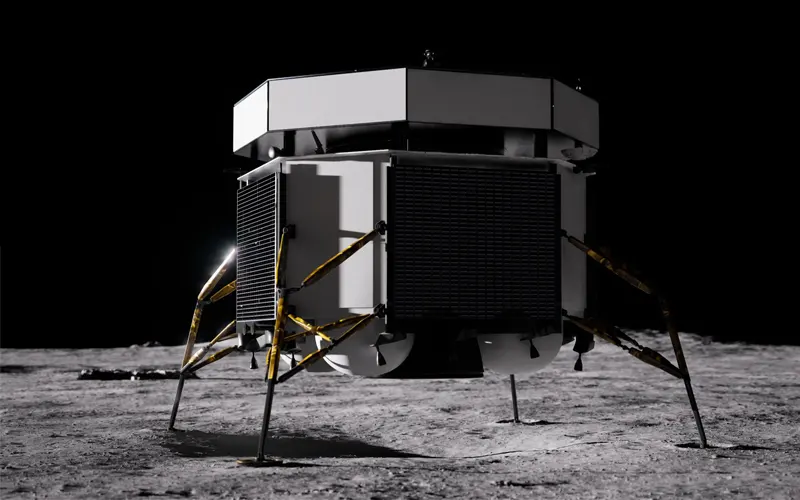 Credit: ESA
Credit: ESA
Thales Alenia Space has finalised the core industrial team for the development of the European Space Agency’s Argonaut lunar lander, awarding contracts to Nammo and OHB System, as well as to two of its own subsidiaries.
In January 2025, ESA awarded a €862 million contract to a Thales Alenia Space Italy-led consortium to develop the Lunar Descent Element (LDE), the landing module of the agency’s Argonaut lunar lander. The LDE is the core element of the lander and is responsible for each mission’s soft, precise landing on the surface of the Moon.
On 20 November 2025, Thales Alenia Space announced that it had signed multiple contracts with its core consortium partners, finalising the industrial team for the development of the Argonaut lunar lander.
Thales Alenia Space Italy will lead the end-to-end assembly, integration, and testing of the Lunar Descent Element (LDE). Thales Alenia Space in France will handle the design and development of the Data Handling Subsystem and will be responsible for procuring the onboard computer elements. Thales Alenia Space in the UK will oversee the propulsion subsystem, including the procurement of its main components, such as the propellant tanks and thrusters.
Norwegian aerospace and defence company Nammo will be responsible for designing the lander’s main engine. Germany’s OHB System rounds out the core industrial team. It will manage the guidance, navigation, and control, electrical power, and telecommunications subsystems, as well as procure a range of associated components, including the solar array, batteries, LIDAR, and transponders.
The team remains mostly the same as originally announced in January, with the addition of Nammo, which was not initially listed as a member of the core industrial team. Another slight change to the initial announcement is the expected launch date of the first Argonaut lunar lander.
According to a 30 January 2025 ESA press release, the first Argonaut mission was expected to be launched in 2031. However, the agency’s announcement from 20 November now projects the initial mission being launched a year earlier in 2030.
Once complete, the Argonaut lunar lander will stand six metres tall with a diameter of four and a half metres. It will have a launch mass of around ten tonnes and will be capable of delivering roughly 1,500 kilograms of payload to the lunar surface. The first Argonaut mission is scheduled for 2030 and will launch on an Ariane 6 rocket in its four-booster configuration.
Keep European Spaceflight Independent
Your donation will help European Spaceflight to continue digging into the stories others miss. Every euro keeps our reporting alive.
